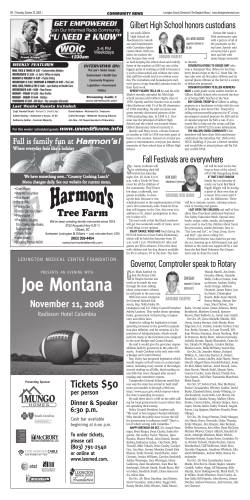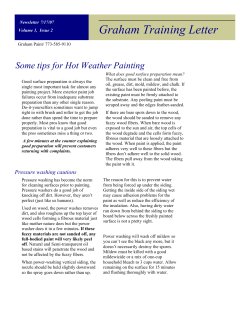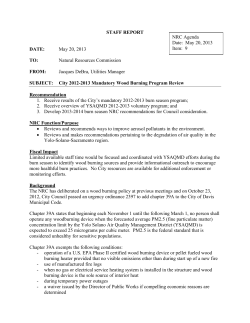
The Rev Gilbert White How to get there
How to get there Selborne is on the B3006 which links the A31 at Alton and the A325 and A3 at Greatham. Follow brown heritage signs for Gilbert White’s House. Transport Public car park behind The Selborne Arms. Rail: Alton (4 miles) and Liss (6 miles) Stations: www.southwesttrains.co.uk Bus: Services from Petersfield, Liss and Alton Stations to The Selborne Arms (not Sundays): www.stagecoachbus.com The Rev. Gilbert White 1720–1793 A walk around Selborne Places to visit Gilbert White’s House & Garden and The Oates Collection: www.gilbertwhiteshouse.org.uk St. Mary’s Church, off the Plestor. Gilbert White’s tombstone is in the churchyard. Inside are windows commemorating bicentenaries of his birth and death. Refreshments Gilbert White’s Tea Parlour, The Queens, The Selborne Arms, Selborne Post Office. Further Information Walks in East Hampshire: www.easthants.gov.uk/walking Petersfield Tourist Information Centre: 01730 268829. Follow the Countryside Code: www.naturalengland.org.uk The Hangers Way: www.hants.gov.uk/walking Acknowledgements This leaflet was prepared by Dr. June Chatfield, former Curator of the Gilbert White Museum, for East Hampshire District Council. Revised 2014. The Natural History and Antiquities of Selborne, Gilbert White. Hampshire Days, W.H. Hudson. Maps Ordnance Survey Explorer Map 133 Haslemere & Petersfield (1:25,000). “A rural, sheltered, unobserved retreat.” From The Invitation to Selborne, poem Literary Walks in East Hampshire Points of literary interest East Hampshire has a wealth of literary associations. The literary walks have been devised to illustrate the work of six important writers who were close observers of their natural (and social) environment. Their combined experiences span more than two centuries of East Hampshire life. Born in Selborne in his grandfather’s vicarage, Gilbert White lived there for most of his life at “The Wakes”. He worked as a Curate (never Vicar) in nearby Farringdon and in Selborne, where he died. Long regarded as a pioneer British naturalist, his classic book, The Natural History and Antiquities of Selborne (1789), is still in print and has made the village famous around the world. e Selborne Priory was a house of Augustinian canons (1233 – 1486). The buildings were demolished and the stone re-used locally. The site was excavated (1953 – 1971); White’s Antiquities tells the story of the priory that was closed before the general dissolution of the monasteries (1536-40). a The old butcher’s shop opposite Gilbert White’s House. Two of the four lime trees planted by White in 1756 survive (The Garden Kalendar). The front view of Gilbert White’s House has changed much, but the dormer windows are contemporary. The local malmstone and brick is used in buildings and the mortar lines decorated with pieces of ironstone – seen on Plestor House and outside butcher’s shop. Pavement of local blue rag – Upper Greensand (Letter 4 to Pennant). b Plestor means “play place” – fairs and markets were held there. There is an oak and old sycamore, the latter possibly planted by White’s brother, Thomas. The Plestor was illustrated in the original edition of Selborne (Letter 2 to Pennant, 28 to Barrington and 10 in Antiquities). f White gives the origin of “lythe” as Saxon for steep slope (The Naturalist’s Journal, 13 April 1775). In his time, the Short Lythe was a pasture and the sunny bank occupied by field crickets. Mole crickets then lived in the banks of the stream (Letters 46 and 48 to Barrington). The track from Priory Farm to Selborne through Dorton Wood is an ancient road; the Via Canonorum. White recorded the Green Hellebore here: it is still in Dorton Wood and flowers early in the year; and Toothwort, a parasite on hazel roots, flowering in April is still seen at the edge of the wood (Letter 41 to Barrington). g Huckers Lane is a hollow way in the malmstone (Upper Greensand). Part way up is an exposure in the bank. Near the car park is an old standpipe – part of the system for piping water from Wellhead to the whole village, established in 1894 to mark the centenary of White’s death. h The park at the foot of the Hanger is part of Gilbert White’s property. Under Higher Level Stewardship it is managed as a meadow. c White described the ancient yew in Letter 5 of Antiquities: it has inspired other writers – Thomas Bell, William Cobbett and W. H. Hudson. To the north of the church (Antiquities Letters 3 and 4) is White’s simple grave stone. The church is 12th century transitional Norman – the naturalist’s grandfather (also Gilbert) was Vicar; his tombslab is in front of the altar. A stained glass window with birds was erected for the bicentenary of White’s birth in 1920 and another window with animals commemorated that of his death in 1993. i The zigzag path up the Hanger was cut by Gilbert White and his brother John in 1753. Note the sarsen or wishing stone on top, placed there by White. j Coneycroft derives its name from a former rabbit warren (Antiquities Letter 26). Look out for roe deer. Stinking Hellebore and Spurge Laurel, both flower early and still grow in the woods (Letter 41 to Barrington). d Gilbert White refers to the two streams in Selborne, Wellhead being the most reliable (Letter 1 to Pennant). l k The road junction is the site of the Selborne Riot of 1830 on the workhouse (Hudson’s Hampshire Days). Gilbert White describes the hollow lanes as one of “the singularities of this place” (Letter 5 to Pennant). Route The full route is about 6 miles (4 hours); the first circuit 2½ miles (1½ hours); the second circuit 3½ miles (2 hours). The walk is in a figure of eight and can be done in two parts. The first circuit (1 – 8) is through the churchyard and Lythes to Priory Farm and back to the village through the beeches of Dorton Wood. This picks up the older part of Selborne’s history: this section follows the valley and is on a level. The second and more adventurous circuit (9 – 15) is up the zigzag and along footpaths through Selborne Hanger and Common to Coneycroft and the northern end of the village. 1 The starting point is the public car park behind The Selborne Arms. Turn left out of the car park, along The Street to The Queens. Cross the road and stop to look at the old butcher’s shop and Gilbert White’s House opposite (see a). 2 Cross the Plestor; a small area of grass – a scene little changed since White’s time, apart from cars (see b). 3 Enter the churchyard – this area is full of interest and worth making a detour (see c). Leave the churchyard at the kissing gate and notice the view with the deep valley below. 4 The land for the next stretch is owned by the National Trust. Cross Church Meadow, the stream and follow the path at the foot of the Short and Long Lythes (see d). 5 Leaving the National Trust woods, cross Coombe Meadow to the ponds and enter Coombe Wood by stile (immediately opposite and to the right). Continue to the end of the wood, leaving by a stile, then follow field edge to kissing gate (see e). 6 Turn right into a trackway, past a bungalow and along the top of the field with hedge on left, enter Dorton Wood. This is farmland so be sure to close any field gates you open. 7 Follow track (Via Canonorum) through the beeches of Dorton Wood with the stream in a deep valley to the right (see f and g). 8 At the end of Dorton Wood follow the track that links with a surfaced road past Dorton Cottage and back to The Street (see g). Turn left to the car park and at this point you can either finish the walk or continue. 9 From the car park take the footpath signposted to Selborne Common and follow this between a field and a woodland strip. Enter the Hanger at the gate (see h). 10 Selborne Hanger and Common is National Trust property. Ascend the zigzag path to the top and stop to admire the fine view (see i). 11 Follow the path leading off (right) behind the seat, across the top of the wood and cattle gates, to the open common. 12 At a junction of paths follow that to the right, along the edge of the wood. At the other end turn right, look out for a right turning at a blue National Trust waymark sign and end of field on left (see map). Continue along some distance to a T-junction, turn left down a gully and left again to bottom of valley and Coneycroft field (see j). 13 At the end of Coneycroft follow waymarked path at the edge of the wood to Wood Lane and the northern part of Selborne (see j). 14 At road junction take the second left (no through road) to see one of the hollow lanes. Return to the houses at Grange Farm and follow footpath left along the edge of the development. Leaving by a kissing gate, walk a short distance before turning left to see a footpath sign right into another hollow lane – Cow Lane – which is unsurfaced and gives the impression of lanes in White’s time. Continue to the end and the B3006 (see k and l). 15 Cross the road, turn right and continue along to the village centre. Map N 0 ¼ ½ e mb Coo ood W ALTON B3006 miles ger an h k Oa ream St e the g Ly n o L 5 St. Mary’s Church l k 14 j Se lb o rne e orn Selbmmon Co P g SELBORNE 1 h Ha ng er 7 ood nW o t r Do 8 d 4 3 c 2 ab 13 roft eyc n o C f the t Ly r o Sh nge Graarm F 15 6 9 i 10 12 Wellhe ad Stre am 11 00 B3 6 GREATHAM Priory Farm
© Copyright 2026

















